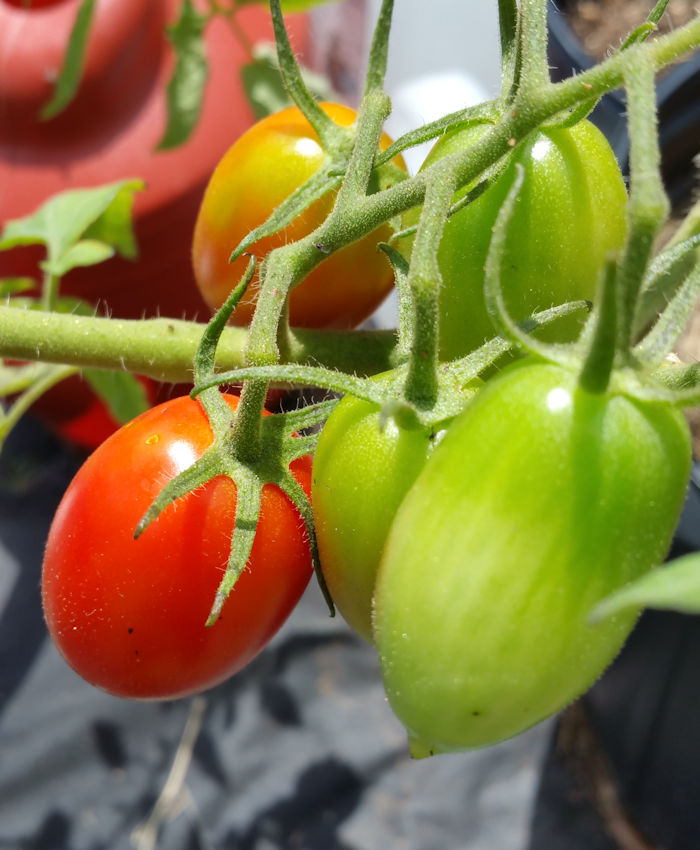Using Fertilizers
Now that you know what makes up fertilizer, the next question might be how to actually use the fertilizer on your tomato plants. Even tomatoes grown organically in rich soil need some help in times of swift growth or when having lots of fruit on the plant.
There are several ways to apply the fertilizer: foliar, liquid and granular. Each has its strengths and weaknesses, which is what I’ll discuss in this post. And in actuality, you may choose two or all three methods at different points in your tomato plant’s life.
Foliar Fertilizer
Foliar fertilizer is sprayed onto your tomato plants and absorbed through the leaves. The absorption rate is swift, and many growers (including me) swear by foliar fertilizing for healthy tomato plants.
Foliar fertilizers in general should be diluted, so that there is no chance of the plant’s leaves being burned. Good bets for organic foliar fertilizers include Terracycle, liquid seaweed and fish emulsion.
The downside for this fertilizing method is that it must be done early in the morning, before the dew dries. This is because that’s when the plant’s stoma are open and receptive. Later on in the day, the stoma are closed, so even if you did a foliar feeding, it wouldn’t be absorbed.
Some people say you can also foliar feed in the evening, when the stoma are once again open. However, I don’t like to leave my tomato leaves damp in the evening because I feel it increases the risk of fungal diseases in my humid climate.
Liquid Fertilizer
Liquid fertilizer is pretty much what it sounds like; a fertilizer diluted in water. Liquids can be used both for foliar feedings as well as drenches (i.e. pouring on the soil around the plants).
If you choose to use the liquid fertilizer as a foliar feeding, dilute to 1/2 the strength suggested on the instructions. If you choose to use it as a drench, give the plants a light watering before applying the drench.
When using a drench, make sure you aren’t splashing any soil up onto the tomato stems or leaves, to reduce the risk of any soil bacteria that may be present from getting on the plants.
Granular Fertilizer
Granular fertilizer is in solid form and generally sprinkled on top of the soil around the tomato plant. Some granular fertilizers can be mixed into the soil before you transplant into your garden or a container.
Granular fertilizers can be time-released, feeding the plant over the course of several months. However, I don’t generally recommend that because the needs of the tomato plant change as the plant gets larger and starts to bear fruit. I feel that a granular fertilizer that is good for one month is more appropriate…unless it is a granular fertilizer made specifically for tomatoes, like Tomatoes Alive!® .
I’m also including solid fertilizers like Jobe’s tomato fertilizer spikes in this category, because they function roughly the same as granular.
Don’t Over-Fertilize
The most common mistake is over-fertilizing the tomato plants. I know, it’s tempting to want the plants to grow big right away, but using a lot of fertilizer isn’t the way to get strong, healthy plants. A lighter touch yields better results.
The exception is if you are growing your tomato plants in containers. Since you need to water them more often, you’ll also need to fertilize them more often. It’s better to use less than you think you need at first, because you can always add more. But if you use too much fertilizer at one time, you risk burning the roots (not a good thing).
I grow a lot of tomatoes in containers, and I find that using a weak (no more than 1/2 strength) more often gives me better results.
Leave a Reply